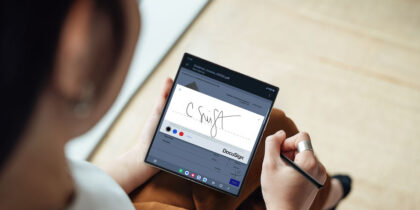Nearly 6 million U.S. households are unbanked or underbanked, which means they either don’t have a checking or savings account or have a bank account but lack access to other financial services, such as loans.
This lack of access costs time and money and compromises financial literacy. Unbanked and underbanked Americans have spent billions in fees and interest on financial products. Many of these fees result from individuals relying on costly check cashing services or payday loans — services that might be avoided if they had access to banking and financial education with a smartphone. Mobile banking can help close financial literacy and access gaps. By giving their customers access to smartphones and apps banks can increase accessibility and financial engagement in ways that empower the communities they serve.
How mobile banking can advance underserved communities
Digital technologies have created opportunities to advance financial equity, but one persistent challenge is that unbanked and underbanked households have limited access to these tools. According to Pew Research Center, 66% of unbanked households do not have access to home internet, and 24% of households with incomes below $30,000 a year don’t own a smartphone. Banks can address these challenges by putting digital tools directly into the hands of community residents.
Banks can provide unbanked and underbanked households with mobile devices to expand access to banking apps and financial education. Mobile banking apps are powerful tools because they make financial services available 24/7, allowing customers to check their bank balances, pay bills, and even access their credit score in minutes. Mobile apps and devices are also invaluable resources for financial education. Banks can use these technologies for in-app learning and financial engagement. They can share educational content on topics such as budgeting, saving, and investing and offer interactive tools such as financial calculators that help customers calculate interest rates, savings growth, and their monthly budgets. Mobile tools can also promote good financial practices through reminders and alerts about account balances and bill due dates, which can help customers avoid overdraft and late fees.
Bridging the digital-human gap in banking and insurance
Find out the expectations of banking and insurance customers in this IDC whitepaper sponsored by Samsung. Download Now
Providing devices to unbanked and underbanked households not only benefits customers. Banks that have invested in improving their digital banking applications as part of a business strategy can maximize app usage, gather feedback and make the most of this investment.
How banks can drive greater social and financial impact
Many banks have a community impact mission. Giving mobile devices configured with their banking app and educational content to local residents who are unbanked or underbanked is one way these institutions can fulfill this mission. These efforts can also benefit banks from both regulatory and commercial perspectives.
In late 2023, the Federal Deposit Insurance Corporation (FDIC) finalized changes to the Community Reinvestment Act (CRA), which now evaluates how financial institutions use digital banking to achieve financial equality and meet the needs of low-to-moderate income (LMI) communities. Banks can combine social impact and technology to achieve their social responsibility and financial inclusion commitments.
For example, banks can partner with technology providers to accelerate progress in this area and provide subsidized mobile devices to customers, even in communities where device and broadband access is limited. These solutions allow banks to preload devices with custom-branded apps. Customers can then use the apps to open and access their accounts, deposit checks, remotely connect with in-branch advisors, and access financial education content. Banks can even use a cloud-based device management solution with defense-grade security to remotely configure and manage these devices.
All of these capabilities allow financial institutions to build long-term, trusted connections with customers outside their branch network while supporting them throughout their financial journey — from initial account opening and buying their first home to opening a business and retirement planning.
Mobile technologies can make banking accessible to unbanked and underbanked households. Banks can use mobile banking to advance financial inclusion and promote how to expand financial literacy, empowering their customers with the tools and knowledge they need to build their financial legacies.
Interested in learning more about Samsung’s Community Impact Banking solution? Contact your account manager or request to speak to a financial services expert. And sign up for our newsletter, INSIGHTS: Banking, a monthly update from Samsung on banking trends and technology’s role in the financial services industry.









